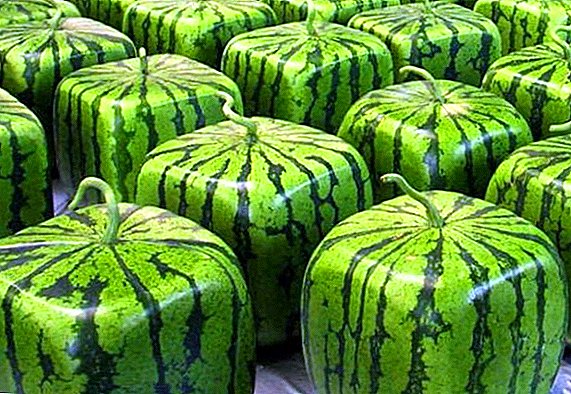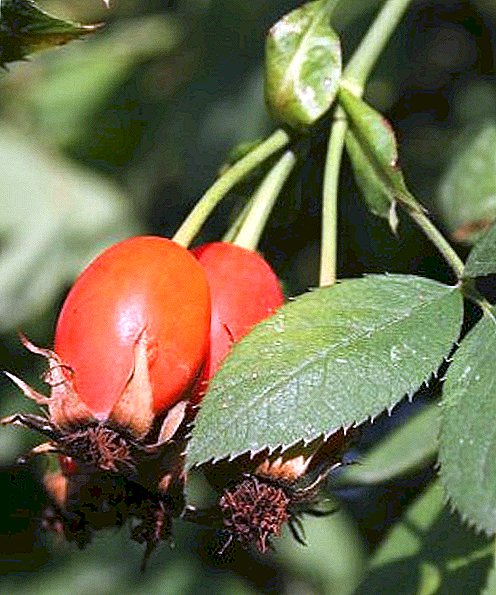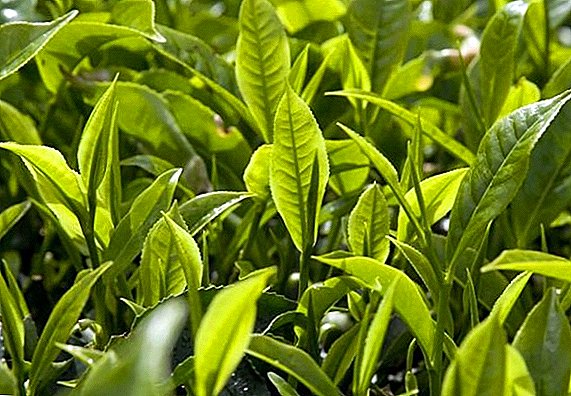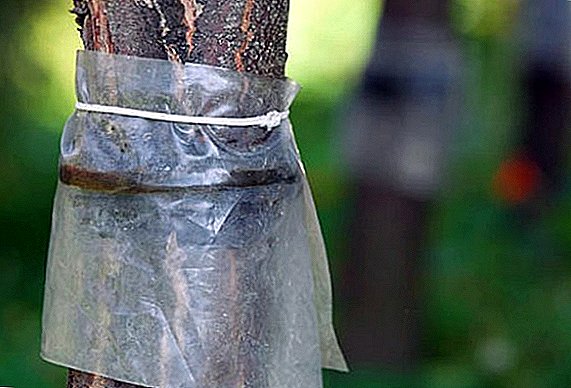 The problem of insects, which destroy a huge number of garden trees, exists in every area.
The problem of insects, which destroy a huge number of garden trees, exists in every area.
Effectively getting rid of them helps hunter belt - a device for the collection and destruction of pests, which is a strip width of 20-25 cm from different materials.
A huge advantage of the trap is its environmental safety in relation to plants and humans due to the mechanical method of influence on insects.
It is necessary to understand how the catcher belt for trees (apples, pears, plums, cherries, and many others) from garden pests, made with his own hands, is arranged.
What is it for?
Such constructions are made of various materials - sacking, matting, straw, glass wool, foam rubber, tow, film, corrugated or compacted paper and other opaque materials. This kind of protection allows you to:
- collect for further destruction of live insects, moving from the ground to the leaves;
- neutralize beetles, caterpillars, ants, or their larvae using an adhesive substance or insecticide applied to the structure;
- being on a tree throughout the season, the belt allows you to catch not only those insects that move up to the crown, but also individuals that descend for further settlement. It helps to reduce the population of various species of larvae hiding under the bark of trees.
 Hand-crafted belts on fruit trees help fight:
Hand-crafted belts on fruit trees help fight:- tsvetoedom, destroying the buds of pears and apples, and preventing the formation of ovaries in the trees;
- bark beetles gnawing whole labyrinths under the bark of plants;
- ants;
- aphids carried by ants;
- apple and pear caterpillars;
- plum moths;
- various weevils (gray buds, cherry elephants, beechwood, geese, etc.).
Did you know? Aphids for ants are peculiar "cows". They live on the principle of symbiosis - aphid gives delicious nutritious "milk" - And the ants protect their "cattle" from enemies, provide them with shelter, take care of the larvae and young. Thanks to the ants, the aphid hits the trees along the trunks.Wide strips made of various materials are mounted on the lower bole of the trees, at a height of 50 cm from the ground. They clean the trap as pests accumulate on it. With an excess of insects, it is removed and burned.

Types and manufacture of hunting belts
Belts can be made of three types:
- dry - are divided into the following types:
- funnel;
- skirt;
- double sided funnel;
- adhered to the cortex of the structure with a fibrous, soft layer.
- poisonous;
- sticky.
Dry
The mechanism of action of such belts is to create a barrier for insects as they move along the trunk. Such means of protection should be made of the smoothest possible materials so that the pests' feet slide along their surface and cannot hold on or have a shape that prevents insects from finding their way to the trees crown.
The most effective of the dry - funnel-shaped trap. It is usually made of cardboard or other flexible and dense material that can be wrapped around the barrel in the form of a funnel, the bell down.
Tie the upper part of the funnel with a rope or wire, pressing the belt to the tree as much as possible to reduce the gap. 
Important! Before you fasten the belt, be sure to clean the dead bark and cover the cracks with clay or clay.
A dry trap can be shaped as a skirt. It can be made from a rubber plate, gluing the seam with wood glue and turning the bottom edges up. It is better to pour a viscous liquid such as oil or glue into the annular cavity formed in this way, so that insects cannot get out of it. This is a very durable type of protection.
You need to change such a trapping belt as the trunk grows, periodically clean it from bugs and add viscous liquid.
Double-sided funnel is usually made of cardboard. It is necessary to wrap it around the trunk, forming two craters oppositely directed to each other and tie up the central part of the structure in two places.
Read also about harmful insects and animals, which every gardener and gardener simply must know: mole, whitefly, Colorado potato beetle, scoop, bear, slug.It will turn into a belt divided into three parts, in which insects crawling in both directions of the trunk will linger and die.
Another effective dry protection option is strips of glass wool or foam rubber. Products fit snugly enough to the bark of trees, blocking all cracks, and the ability to get pests through dense material is minimized. If at the same time the surface of the structure is covered with stretch film, then the insects will not be able to sneak around the outside. 
Important! In the case of wrapping the trunk with a fibrous material, additional coating of clay is not needed.The use of such belts is effective at the level of insect collection traps.
Poisonous
By design, such products are similar to dry. However, they are impregnated with insecticides that are effective against creeping pests that are active at one time or another.
Insects on such a tape do not linger, but die, falling off the trunk. Such a device does not require cleaning, but periodically the impregnation should be updated.
Did you know? In addition to trapping belts, they use another tree protection available for manufacturing against the codling moth. It is necessary to pour into the container a little liquid undergoing the fermentation process - stale compote, kvass, beer or diluted wine at half the volume. Such jars are usually hung at the base of the skeletal branches of trees in the evening and removed during the day, in order to avoid useful insects falling into the trap.

Sticky
Sticky traps on the outside are covered with a sticky substance that does not dry out for a long time, such as glue against small rodents. Such constructions are resistant to moisture and are able to detain pests for a long time.
In addition to glue against rats and mice, this belt can be coated with a mixture of pine resin of resin with “Vaseline” and rosin in a ratio of 10: 1.5: 1.2, boiled to a state of adhesive mass.
Also effective glue from birch tar with burdock oil in the amount of 2: 1. To prepare the mixture, you need to bring the tar to boil, and then pour the oil into it, cook over low heat for five hours.
The green adhesive belt does not attract beneficial insects, so this option contributes to their lesser falling into the sticky trap. The distance from the ground for such protection must be at least 70-80 cm.
Important! The film is usually covered with glue in a spiral. Sticky traps impose before the swelling of the kidneys, blocking the path of the color beetle.Remove the protection you need shortly before frost. In case of accumulation on the surface of a large number of insects, the design must be replaced.
If the traps for ants, caterpillars of moths and other pests, made with their own hands, are technically correctly and in advance, they will dramatically increase the yield of fruit trees several times.












